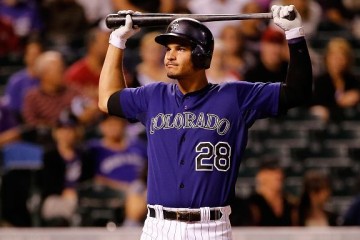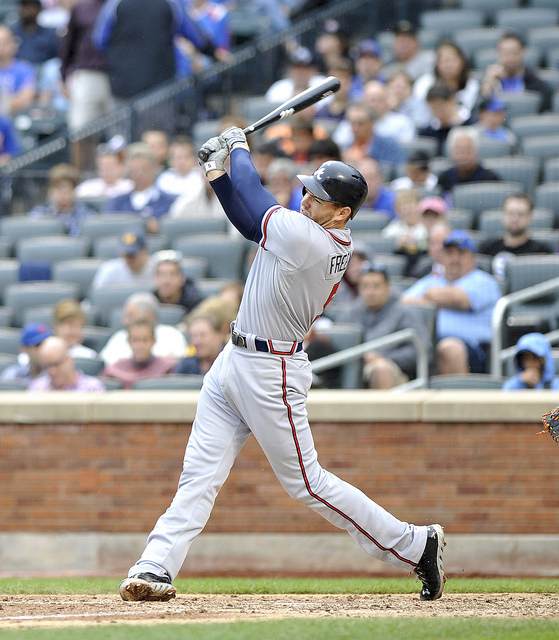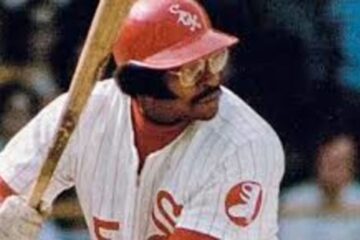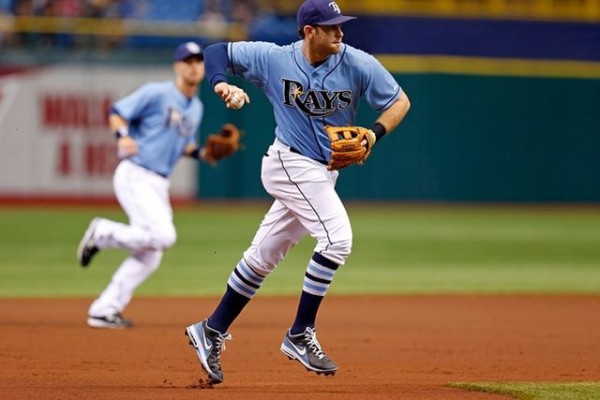2015 Fantasy Baseball: Third Base VORP Revisited

As we continue with our value over replacement player series, we come to a point where we should take a step back. Sometimes it helps to ask ourselves some basic questions before continuing with our endeavor. A number of sites have numbers similar to VORP. Essentially, it amounts to runs above replacement. Baseball Prospectus is the author of VORP, and their PECOTA system has been closer to predicting players’ future performance than anyone. So, I’ve gone with VORP.
As you have seen if you’ve tuned in the last few times, we are taking the last three seasons and developing an adjusted average for VORP. We then compare that average and where it ranks with other averages where Yahoo has ranked its players. When we see a large discrepancy, it always pays to slow down and take a longer look at it. We adjust the VORP by weighting the most recent seasons more than the seasons before that. Hopefully, it gives the numbers a little more relevance.
What we will do today is take the top twenty Yahoo third basemen and see how they look when we apply the VORP test. Naturally, this is very helpful when preparing for a draft because there are some players that are still third base eligible that I would have never dreamed would be. That makes a difference when ranking your big board. You might see some of the same names as we’ve seen at other positions. They aren’t typos.
| Yahoo | 2014 | 2013 | 2012 | AVG | ADJ | Rank | |
| Miguel Cabrera | 1 | 44.8 | 84.8 | 61.7 | 63.8 | 61.0 | 1 |
| Anthony Rendon | 2 | 51.3 | 11.0 | —- | 31.2 | 34.5 | 8 |
| Adrian Beltre | 3 | 49.3 | 57.4 | 60.4 | 55.7 | 53.4 | 2 |
| Josh Donaldson | 4 | 41.3 | 56.0 | 10.6 | 36.0 | 41.1 | 4 |
| Todd Frazier | 5 | 45.8 | 19.6 | 25.7 | 30.4 | 33.7 | 10 |
| Nolan Arenado | 6 | 24.8 | 7.8 | —– | 16.3 | 17.7 | 17 |
| Evan Longoria | 7 | 34.9 | 49.6 | 25.2 | 36.6 | 38.2 | 6 |
| Kyle Seager | 8 | 45.4 | 43.2 | 29.5 | 39.4 | 42.0 | 3 |
| Carlos Santana | 9 | 33.0 | 45.1 | 35.4 | 37.8 | 37.4 | 7 |
| David Wright | 10 | 14.9 | 48.4 | 61.6 | 41.6 | 33.9 | 9 |
| Pablo Sandoval | 11 | 23.7 | 18.6 | 25.5 | 22.6 | 22.3 | 14 |
| Chris Davis | 12 | 10.7 | 73.9 | 18.7 | 34.4 | 33.1 | 11 |
| Matt Carpenter | 13 | 34.3 | 64.7 | 14.3 | 37.7 | 41.1 | 5 |
| Daniel Murphy | 14 | 26.6 | 27.5 | 24.3 | 26.1 | 26.5 | 12 |
| Manny Machado | 15 | 14.5 | 26.4 | 4.8 | 15.2 | 16.9 | 18 |
| Ryan Zimmerman | 16 | 11.9 | 34.6 | 38.5 | 28.3 | 23.9 | 13 |
| Josh Harrison | 17 | 40.8 | 0.1 | 3.1 | 14.7 | 21.0 | 15 |
| Aramis Ramirez | 18 | 16.3 | 14.6 | 43.3 | 24.7 | 20.2 | 16 |
| Xander Bogearts | 19 | 14.6 | 4.3 | —- | 9.5 | 10.3 | 20 |
| Brett Lawrie | 20 | 8.0 | 12.8 | 16.8 | 12.5 | 11.1 | 19 |
The first thing we notice is that third base is not nearly as barren as we might have previously thought. Then again, it helps when Miguel Cabrera, Chris Davis, and Carlos Santana are technically eligible at the position. Still, we see sixteen players here with adjustable VORP averages above twenty. Additionally, Chase Headley, Juan Uribe, and Pedro Alvarez also have adjusted VORP scores above twenty, and they didn’t make the cut for the top twenty at the position.
Keep in mind that the rankings you see on the far right represent where the player ranks within the top twenty players listed. Players like Xander Bogearts, Brett Lawrie, Manny Machado, and Nolan Arenado would actually rate much lower if we included the entire third base universe. Let’s take a look at the most overrated and most underrated players.
Most Underrated Players
Matt Carpenter — St. Louis Cardinals (+8)
Let’s ignore 2013 for the time being. I admit those numbers stick out like a sore thumb. One of the values of expressing the numbers like you see above is that it allows us to see out of context numbers more visually. Admittedly, Carpenter is up against a stacked deck, but there is no good reason for him to be picked underneath Nolan Arenado. Paul Bear Bryant once famously said, “potential means they ain’t done nothin’ yet.” I’d rather go with proven production. Carpenter plays up particularly in leagues that feature walks or OBP.
Kyle Seager — Seattle Mariners (+5)
A commenter gave me a hard time when I showed the per 150 numbers for all of the third basemen. He laughed when certain players were ranked above Seager. Of course, those rankings were for entertainment purposes only. Yahoo is perpetuating them beyond those fun and games. I’m not sure why they have him rated so low, but throwing him up to number three seems a bit high. He did sign a 100 million dollar contract extension, but 100 million dollar deals don’t make you a more productive hitter.
Ryan Zimmerman — Washington Nationals (+3)
Third base has come about as close to chalk as any position we’ve looked at so far. Zimmerman is moving to first base, so it is more likely that he will remain healthy. His numbers should play up a little and therefore the higher ranking is probably more appropriate. The per 150 game numbers were hilarious (having him as number one) but we have to remember that health comes into play.
Most Overrated Players
Nolan Arenado — Colorado Rockies (-11)
There are two factors at work here. On the positive end, Arenado will outproduce his VORP numbers because he plays half of his games in Coors Field. On the negative end, a part of his advanced ranking is based on the expectation that he will produce. I tend to split the difference here. I know that winning at fantasy baseball involves managing risks, but I just don’t like risking the farm on guys that haven’t done anything significant yet. Who’s to say that this year will be the year he comes of age?
Anthony Rendon — Washington Nationals (-6)
This is a wholly different situation than for Nolan Arenado. Rendon has produced even if it was for just one season so far. Still his pedigree (along with his 51.3 VORP from last season) indicates that he will probably outproduce the VORP ranking. When you add in the fact that he is also eligible at second base then you get an immensely valuable fantasy piece. Yahoo rankings are often based on future considerations and not necessarily past ones. That can burn you in cases like Arenado, but you should pay attention here.
Todd Frazier — Cincinnati Reds (-5)
Frazier is very similar to Seager in a number of ways. Both players have been up for a similar number of seasons and both players seemed to take steps forward recently. The big difference is that Frazier has only done it for one season while Seager has been very productive for two seasons. That extra season makes a big difference when calculating the adjusted VORP average. For us, it is enough to make us wonder if 2014 was simply a career season for Frazier or whether it is the first of many good seasons.





